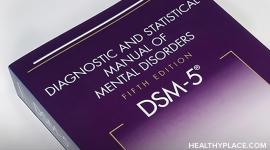Dissociative Identity Disorder (DID) Treatment Challenging

Dissociative identity disorder (DID) treatment can be long-term and difficult but it is possible. DID treatment should, ideally, always be conducted by professionals that specialize in dissociative identity disorder as it is a rare and challenging condition to treat. Dissociative identity disorder treatment primarily involves symptom relief as well as trauma therapy.
How Is Dissociative Identity Disorder Treated in Children?
While DID is not normally diagnosed in children, in the case where a child is showing signs of dissociative identity disorder or dissociation in general, the possibility of abuse should always be investigated. If abuse is suspected, reporting abuse to Child Protective Services (CPS) is required and immediate intervention by professionals is needed. (More on causes of DID)
Professionals to contact in addition to CPS include:
- A psychiatrist or behavioral/developmental pediatrician
- A social services representative
- A child abuse and sexual abuse (CASA) specialist
Dissociative Identity Disorder Treatment Goals
There are many dissociative identity disorder treatment goals. The goals of DID treatment include ensuring the safety of the patient, symptom relief as well as:
- "Reconnecting" all existing DID alters into one, well-functioning identity
- Allowing the person to safely express and process painful memories
- Developing new and healthy coping skills
- Restoring functionality
- Improving relationships
Dissociative Identity Disorder Treatment Types
Dissociative identity disorder is primarily treated with psychotherapy of various types. According to the Cleveland Clinic, the following are DID therapy types:
- Psychotherapy – often thought of as "talk therapy." This DID therapy encourages communication of conflicts and insight into problems.
- Cognitive therapy – involves changing dysfunctional thought patterns.
- Family therapy – helps to educate the family about the disorder, recognize its presence as well as work through issues that have developed in the family because of dissociative identity disorder.
- Creative therapies such as art or music therapy – allows the patient to explore thoughts, feelings and memories in a safe and creative way.
The classic therapeutic treatment approach as described by the International Society for the Study of Trauma and Dissociation (ISSTD) Treatment Guidelines, is called phase-oriented trauma therapy and consists of three phases:
- Stabilization
- Trauma-work
- Integration
Sometimes medication is used in dissociative identity disorder treatment. Although no medication is specifically indicated for DID, medication can help with people who experience certain symptoms like severe depression or anxiety.
Finally, clinical hypnosis is also used in the treatment of DID. This process involves intense relaxation, concentration and focused attention to achieve an altered state of consciousness. This allows a person with dissociative identity disorder to explore thoughts, feelings and memories that may be typically hidden from his or her conscious mind. In this state, the therapist may be able to talk to each alternate personality (alter).
Is Dissociative Identity Disorder Curable?
As to whether dissociative identity disorder can be cured varies according to the individual and the individual's definition of the word "cured." Some people with DID are looking for ways to manage their alters in what they consider to be a healthy way and are reluctant to reconnect all their separate identities because they help the person to cope with life's difficulties and traumatic memories. For others, integrating all personalities into one healthy identity is what they are looking for. Each of these states can be attained with DID treatment but it can be a painstaking process.
APA Reference
Tracy, N.
(2022, January 4). Dissociative Identity Disorder (DID) Treatment Challenging, HealthyPlace. Retrieved
on 2024, June 20 from https://www.healthyplace.com/abuse/dissociative-identity-disorder/dissociative-identity-disorder-did-treatment-challenging



